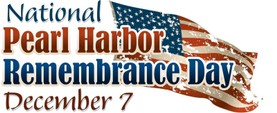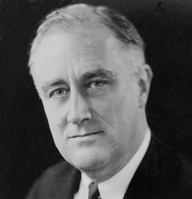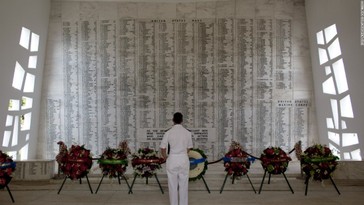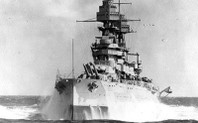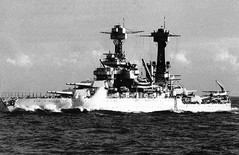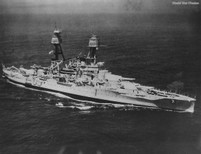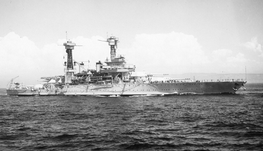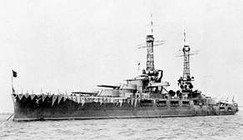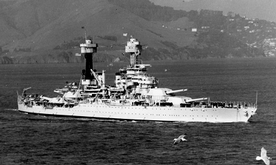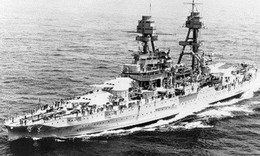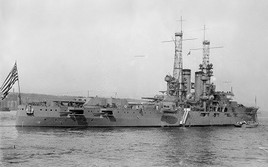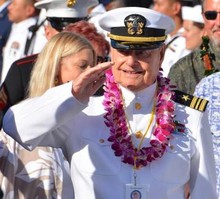REMEMBER PEARL HARBOR - American Legion Post #40
Main menu:
REMEMBER PEARL HARBOR
Special Interests
View Post #40 World War II Veterans*Veterans shown are based on available information. Click here
Remember and honor the 2,403 citizens of the United States killed in the Japanese surprise attack on Pearl Harbor in Hawaii.On the morning of December 7, 1941, the Japanese launched a surprise air attack on the U.S. Naval Base at Pearl Harbor in Hawaii. After just two hours of bombing, 21 ships* had either been sunk or damaged, and more than 188 U.S. aircraft destroyed.A total of 2,335 servicemen were killed and 1,143 were wounded. Sixty-eight civilians were also killed and 35 were wounded. Nearly half of the servicemen that were killed were on board the Arizona when it exploded.World War II Wall of Valor within the Pearl Harbor National Memorial
Pearl Harbor in Honolulu, Hawaii marks the resting place of 1,102 of the 1,177 sailors and Marines killed on USS Arizona during the attack on Pearl Harbor. Photos are the ship before the attack (left) and after (right).
USS Arizona (BB-39) Pennsylvania-Class Battleship
Built for and by the United States Navy in the mid-1910s. Named in honor of the 48th state's recent admission into the union, the ship was the second and last of the Pennsylvania class of "super-dreadnought" battleships. Although commissioned in 1916, the ship remained stateside during World War I. Shortly after the end of the war, Arizona was one of a number of American ships that briefly escorted President Woodrow Wilson to the Paris Peace Conference. The ship was sent to Turkey in 1919 at the beginning of the Greco-Turkish War to represent American interests for several months. Several years later, she was transferred to the Pacific Fleet and remained there for the rest of her career.
Hit by four armor-piercing bombs, exploded; 1,177 dead. Total loss
USS Tennessee (BB-43) Tennessee-Class Battleship
The lead ship of her class of battleship, was the third ship of the United States Navy named in honor of the 16th US state. During World War II in the Pacific Theater, she was damaged during the attack on Pearl Harbor in December 1941 but was repaired and modernized.
She participated in shore bombardments at the Aleutian Islands, Tarawa, the Marshall Islands, the Marianas, the Philippines, Iwo Jima, Okinawa among others. She was also involved in the Battle of Surigao Strait, the final battleship vs. battleship conflict in world naval history.
Hit by two bombs; 5 dead. Returned to service February 1942
USS Nevada (BB-36) Nevada-Class Battleship
The second United States Navy ship to be named after the 36th state, was the lead ship of the two Nevada-class battleships. Launched in 1914, Nevada was a leap forward in dreadnought
technology; four of her new features would be included on almost every subsequent US battleship: triple gun turrets, oil in place of coal for fuel, geared steam turbines for greater range, and the "all or nothing" armor principle. These features made Nevada, alongside its sister ship Oklahoma, the first US Navy "standard-type" battleships.
Hit by six bombs, one torpedo, beached; 60 dead. Returned to service October 1942.
One of two Tennessee-class battleships completed shortly after World War I, was the fifth ship of
USS California (BB-44) Tennessee-Class Battleship
the United States Navy named in honor of the 31st state. She was the last American battleship built
on the West Coast, and the only one of the dreadnought type. She served in the Pacific her entire career, and for twenty years was the flagship of the Pacific Fleet. She was sunk in the attack on Pearl Harbor at her moorings in Battleship Row, but was salvaged and reconstructed. She served again for the remainder of World War II before being decommissioned in 1947 and scrapped in July 1959.
Hit by two bombs, two torpedoes, sunk; 100 dead. Returned to service January 1944.
USS Oklahoma (BB-37) Nevada-Class Battleship
Built by the New York Shipbuilding Corporation for the United States Navy in 1910, notable for being the first American class of oil-burning dreadnoughts.
Commissioned in 1916, Oklahoma served in World War I as a part of Battleship Division 6, protecting Allied convoys on their way across the Atlantic. After the war, she served in both the United States Battle Fleet and Scouting Fleet. Oklahoma was modernized between 1927 and 1929. In 1936, she rescued American citizens and refugees from the Spanish Civil War. On returning to the West Coast in August of the same year, Oklahoma spent the rest of her service in the Pacific.
On 7 December 1941, Oklahoma was sunk by several torpedoes during the Japanese attack on Pearl Harbor. Torpedoes from torpedo bomber airplanes hit the Oklahoma's hull and the ship capsized. Survivors jumped off the ship 50 feet (15 m) into burning hot water or crawled across mooring lines that connected Oklahoma and Maryland. Some sailors inside escaped when rescuers drilled holes and opened hatches to rescue them. A total of 429 crew died when she capsized and sank in Battleship Row. In 1943, Oklahoma was righted and salvaged. Unlike most of the other battleships that were recovered following Pearl Harbor, Oklahoma was too damaged to return to duty. Her wreck was eventually stripped of her remaining armament and superstructure before being sold for scrap in 1946. The hulk sank in a storm in 1947, while being towed from Oahu, Hawaii, to a breakers yard in San Francisco Bay.
Hit by five torpedoes, capsized; 429 dead. Total loss.
USS Maryland (BB-46) Colorado-Class Battleship
Also known as "Old Mary" or "Fighting Mary" to her crewmates. She was the third ship of the United States Navy to be named in honor of the seventh state. She was commissioned in 1921, and serving as the flagship of the fleet, cruised to Australia, New Zealand, and Brazil.
She is most notable for her service in World War II. She was present on Battleship Row during the Attack on Pearl Harbor, and was lightly damaged by Japanese bombs. Returning to duty in 1942, she saw service in the Pacific War, first supporting the rest of the fleet at the Battle of Midway, and then patrolling the Fiji Islands to guard against Japanese incursion. Next, she went on the offensive, commencing shore bombardments in the Battle of Tarawa and later in the Battle of Kwajalein. During the Battle of Saipan she took torpedo damage to her bow, necessitating repairs and refits. She then participated in the Battle of Leyte Gulf where she was hit by a kamikaze. She took another kamikaze hit at the Battle of Okinawa, and was under repair at the end of World War II.
After service in Operation Magic Carpet, she was decommissioned in 1947, and sold for scrap in 1959. She received seven battle stars for World War II service.
Hit by two bombs; 4 dead (including floatplane pilot shot down). Returned to service February 1942.
USS West Virginia (BB-48) Colorado-Class Battleship
The second United States Navy ship named in honor of the country's 35th state. She was laid down on 12 April 1920, at Newport News, Virginia, launched on 19 November 1921, and commissioned on 1 December 1923. She was sponsored by Alice Wright Mann, daughter of noted West Virginian T. Mann,[1][2] and her first captain was Thomas J. Senn. After her shakedown and crew training were finished, she was overhauled at Hampton Roads, and later ran aground in Lynnhaven Channel.
Following repairs, she participated in exercises and engineering and gunnery courses, winning four medals in the latter. She participated in other fleet tactical development operations until 1939. In 1940, she was transferred to Pearl Harbor, to guard against potential Japanese attack, and was sunk by six torpedoes and two bombs during the attack on Pearl Harbor. On 17 May 1942, she was salvaged from the seabed by draining the water from her hull.
After repairs in Pearl Harbor, she sailed to the Puget Sound Navy Yard. There she received an extensive refit, including the replacement of her 5-inch (127 mm)/25 caliber anti-aircraft guns and single-purpose 5-inch/51 caliber guns with dual-purpose 5-inch/38 caliber anti-aircraft guns. She left Puget Sound in July 1944, for Leyte Gulf.
She bombarded Leyte in November 1944, becoming part of a successful American plan to destroy the portion of the Japanese fleet trying to sail through the Surigao Strait, and later attacked Iwo Jima and Okinawa. At the end of the Pacific War she entered Tokyo Bay, for the Japanese surrender, and became part of Operation Magic Carpet, making three runs to Hawaii to transport veterans home. She was deactivated on 9 January 1947, and laid up at Bremerton, Washington, until sold for scrap on 24 August 1959.
Hit by two bombs, seven torpedoes, sunk; 106 dead. Returned to service July 1944.
USS Pennsylvania (BB-38) Pennsylvania-Class Battleship
The lead ship of the Pennsylvania class of United States Navy super-dreadnought battleships. The third Navy ship named for the state of Pennsylvania. She was laid down on 27 October 1913, by the Newport News Shipbuilding and Dry Dock Company, Newport News, Virginia. She was launched on 16 March 1915, sponsored by Elizabeth Kolb of Philadelphia, and commissioned on 12 June 1916, with Captain Henry B. Wilson in command.
In drydock with Cassin and Downes, hit by one bomb and debris from USS Cassin; 9 dead. Remained in service.
Battleship USS Utah (AG-16) Florida-Class Battleship. Ex-battleship (target/AA training ship)
The second and final member of the Florida class of dreadnought battleships. The first ship of the United States Navy named after the state of Utah, she had one sister ship, Florida. Utah was built by the New York Shipbuilding Corporation, laid down in March 1909 and launched in December of that year. She was completed in August 1911 and boasted a main battery of ten 12-inch guns in five twin gun turrets.
64 dead. Total loss.
CRUISERS
Helena: hit by one torpedo; returned to service January 1942. 20 dead.
Raleigh: hit by one torpedo; returned to service February 1942.
Honolulu: Near miss, light damage; remained in service.
DESTROYERS
Cassin: in drydock with Downes and Pennsylvania, hit by one bomb, burned; returned to service February 1944.
Downes: in drydock with Cassin and Pennsylvania, caught fire from Cassin, burned; returned to service November 1943.
Helm: underway to West Loch, damaged by two near-miss bombs;[116] continued patrol; dry-docked 15 January 1942 and sailed 20 January 1942.
Shaw: hit by three bombs; returned to service June 1942.
AUXILIARIES
Oglala (minelayer): Damaged by torpedo hit on Helena, capsized; returned to service (as engine-repair ship) February 1944.
Vestal (repair ship): hit by two bombs, blast and fire from Arizona, beached; returned to service by August 1942.
LAST SURVIVOR OF USS ARIZONA SINKING IN 1941 DIES AT 102By WYATT OLSON STARS AND STRIPES • April 1, 2024
Source - Stars and StripesLou Conter, the last living survivor of the USS Arizona, which sank during the Dec. 7, 1941, attack on Pearl Harbor and has become the site of a memorial visited by millions each year, died Monday morning at his home in Grass Valley, Calif. He was 102.His death was announced in a news release by Historic Pacific Parks, a not-for-profit organization that supports preservation of and education about significant sites in the region.Conter was the last of 335 sailors and Marines who survived the destruction of the Arizona, which claimed the lives of 1,177 crew members after Japanese planes dropped armor-piercing bombs on the battleship.The remains of more than 900 sailors and Marines remain entombed in the ship. The sunken hulk is now part of the USS Arizona Memorial.Conter’s death leaves fewer than two dozen veterans of the Pearl Harbor attack known to be living.For years, Conter, donned in Navy whites, had been a fixture at the annual Dec. 7 commemorations held at the Pearl Harbor National Memorial in Hawaii. He remained vigorous until recent years and often served as a spokesman for the dwindling coterie of survivors.He did not attend the ceremony the past three years due to health issues, but he was present via recorded messages played for the audience.“For those of us who survived that terrible day, we all shared something in common,” Conter said in the 2021 recording. “Dec. 7, 1941, changed our lives — not just for those of us who were on the USS Arizona or at Pearl Harbor but throughout the United States. It affected those of us who served as well as our families, our friends and our neighbors.”The second-to-last living Arizona survivor, Howard “Ken” Potts, died about a year ago at age 102.Conter epitomized what it meant to be a member of the Greatest Generation, which fared the Great Depression and spent nearly four years at war against Imperial Japan and Nazi Germany, said Aileen Utterdyke, president and CEO of Pacific Historic Parks.“He had an exemplary career in the Navy and was steadfast in imploring the schools, parents and everyday Americans to always remember Pearl Harbor,” she said.Lou Conter was born Sept. 13, 1921, in Ojibwa, Wis. He enlisted in the Navy in 1939 and reported to the USS Arizona in Hawaii in 1940 with the rank of quartermaster third class.On the Sunday morning of the surprise Japanese attack, Conter was on watch on the quarterdeck station between the ship’s third turret and main deck when sirens began wailing to announce the first wave, he said in an audio interview in 2015 for the National World War II Museum.When the first bomb hit the Arizona, Conter was knocked forward onto the deck, while many of his fellow crew members were blown entirely off the ship.“Within a few minutes, an armor-piercing bomb hit on the starboard side forward by number two turret, went through six decks into the lower handling room and blew up a million pounds of powder in the forward magazine,” he said. “That’s what blew up.”Conter said an officer who witnessed the explosion from afar later told him that he saw the front of the Arizona rise out of the water about 30 feet before plunging back down.Within 15 minutes, the ship rested at the bottom of Pearl Harbor.Conter escaped on a lifeboat. In the following days, he worked at the grim task of recovering bodies from the harbor and containing fires, he said.Later in the war, Conter piloted amphibious bomber planes and survived being shot down twice, once in shark-infested waters near New Guinea.After the war, he became an intelligence officer and flew combat missions during the Korean War while he was assigned to the USS Bon Homme Richard.He is credited with creating the Navy’s first survival, evasion, resistance and escape program, or SERE, according to the Historic Pacific Parks.During the commemoration at Pearl Harbor in December, Marine Corps Capt. Ray Daniel Hower, Conter’s nephew, talked of the legacy left by the last Arizona survivor and others like him.“Whenever my uncle Lou or any other veteran of World War II is recognized or thanked for their service, they humbly answer: ‘We just did what we had to do,’ ” Hower said. “Fair enough. But the fact that you did it, the sacrifices you made, the courage and heroism you showed, the determination to succeed that you demonstrated, the live sacrifice by the fallen, the legacy that you all built, remains unmatched and a lesson that keeps on teaching.”Go to the following link to view the original article.
| POST #40 WORLD WAR ii VETERANS *Veterans listed are from available Legion information. | |||||
LAIRD H ADAMS 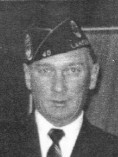 Sep 5, 1922 – Sep 5, 1922 – Mar 16, 1994 | ORVAL H AMDAHL 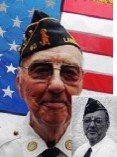 May 26, 1919 – Feb 17, 2015 | CURTIS AUSTIN 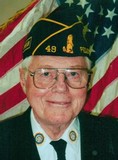 Feb 24, 1925 – Feb 28, 2015 | BENNETT BERGE 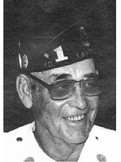 Jun 30, 1922 – May 14, 1998 | LEE BOYUM 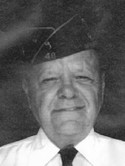 | CONRAD BREKKE 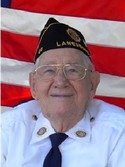 Jun 22, 1921 – May 20, 2016 |
ROLLAND BREKKE 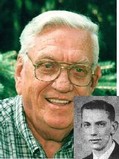 Apr 18, 1927 – Mar 10, 2002 | WENDELL DRAPER 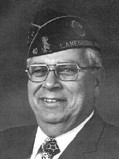 Dec 6, 1922 – Dec 5, 1994 | LEROY 'ERIC' ERICKSON 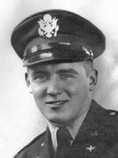 Apr 15, 1924 - Apr 28, 2008 | PAUL A EVENSON 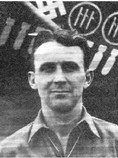 May 24, 1913 - Nov 15, 1999 | EARL FLATTUM 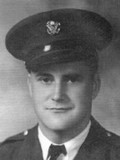 Feb 11, 1918 – Dec 14, 1998 | LESTER GUNDERSON 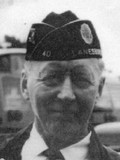 Aug 22, 1989 |
| ADOLPH HALVORSON 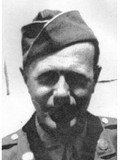 Feb 7, 1905 – Sep 26, 1980 | LEWIS E HANNA 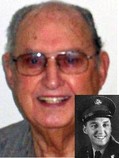 Feb 28, 1928 – Nov 16, 2014 | RUSSELL HANSON 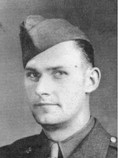 Jun 9, 1916 – Apr 14, 2001 | ELMER HAUGSTAD Aug 28, 1924 – Apr 5, 2020 | ORLANDO T JOHNSON 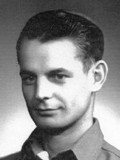 Sep 22, 1923 – 1972 | OTTO KITZMANN 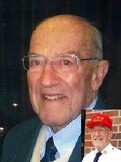 Sep 4, 1925 – Aug 21, 2018 |
| DARRYL NORTHOUSE 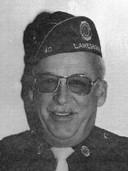 Feb 12, 1925 – Mar 24, 2010 | FERDINE O OLSON 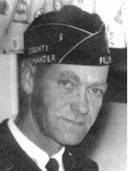 Oct 3, 1913 – 1973 | HAROLD QUARSTAD 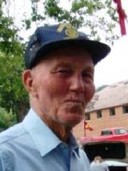 Sep 12, 1920 – Aug 7, 2016 | ELDOR RAHN 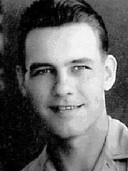 Mar 15, 1921 – Feb 27, 2014 | HIRAM NEIL REDALEN 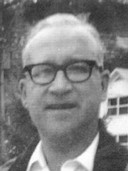 Sep 29, 1911 – Mar 25, 1971 | LEONARD SEMMEN 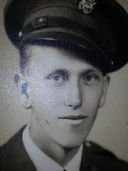 Feb 25, 1916 – Aug 29, 1999 |
| CHARLES ST MANE 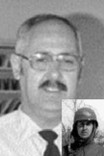 Mar 11, 1927 – Sep 24, 1984 | GORDON STORHOFF 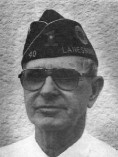 Jun 28, 1916 – Aug 8, 1998 | CLIFFORD H STROM  Sep 30, 1919– Dec 8, 1984 | DONALD M THOMPSON 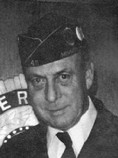 Aug 24, 1924 – Aug 2, 1977 | ALLAN VOGEN 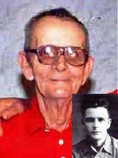 Jun 24, 1925 – Jun 15, 2009 | JAMES WANGEN 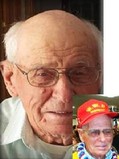 Apr 4, 1919– Jan 7, 2017 |
| DONALD WARD 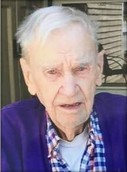 Sep 12, 1919– Oct 13, 2018 | HOWARD M WARD 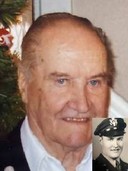 Nov 5, 1920 – Jun 21, 2004 | ||||
Have questions or comments? We welcome your opinion. Please email your comments or suggestions to webmaster@lanesboroamericanlegion.org or call Anne at 507-460-9040. Thank you for your support.

